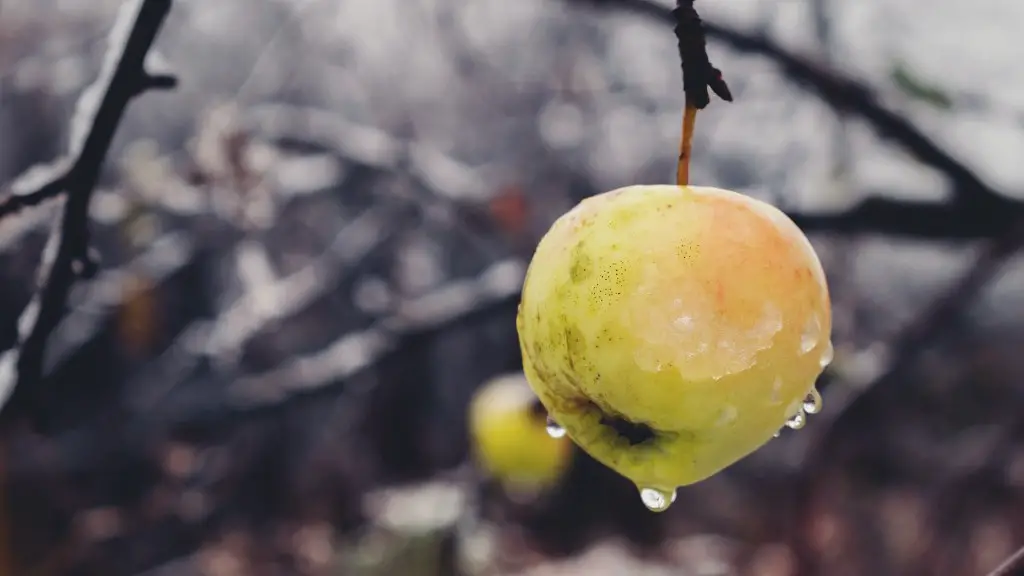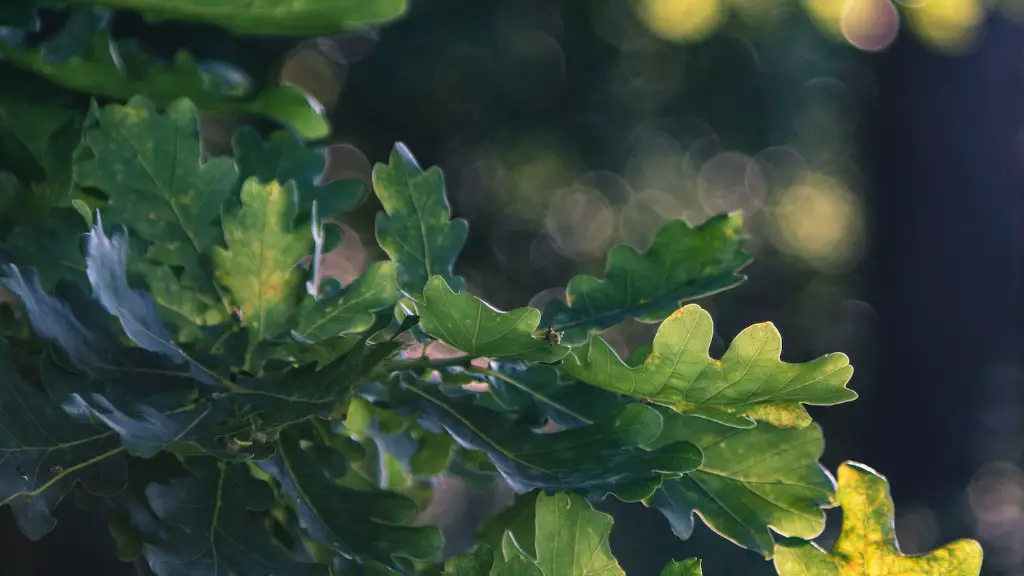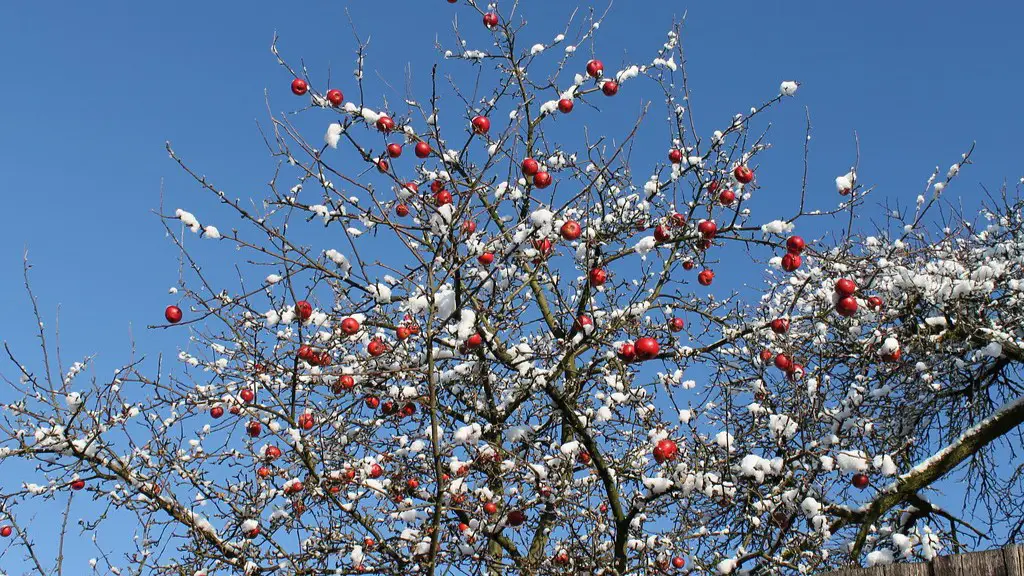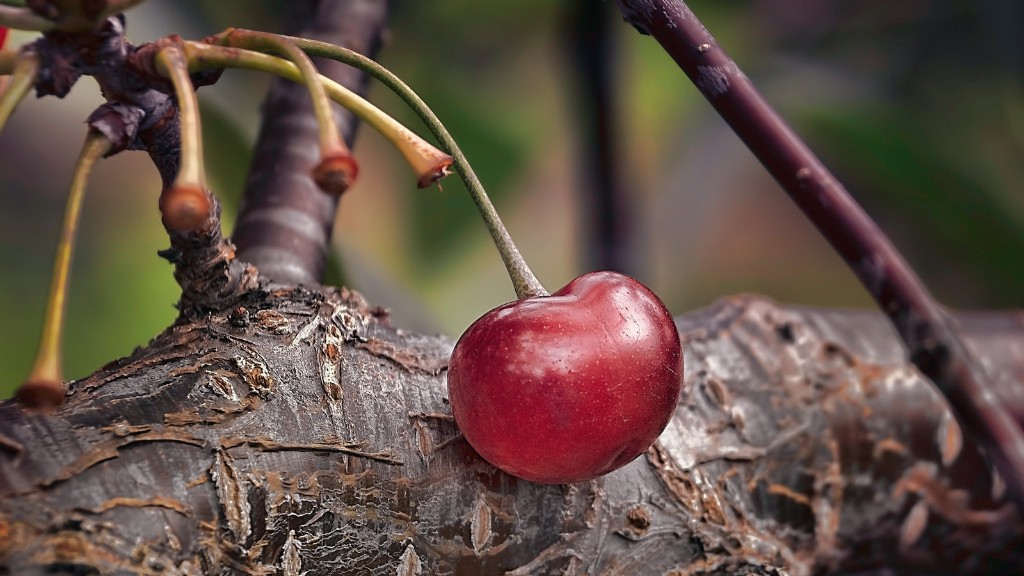Although spring is the best season for pruning an apple tree, it is not too late to do it in summer or fall. Pruning an apple tree at the wrong time can harm the health of the tree, reduce yield or even kill it. Care must be taken to identify when it is the right time to prune an apple tree. Generally, it’s best to avoid pruning an apple tree in winter as this is when the tree is in its dormant period.
Analyzing the type and age of an apple tree is the best way to determine when pruning should occur. Young apple trees should be pruned annually to promote a healthy structure and improve productiveness. As an apple tree grows, it should be dealt with according to its size and environment. Pruning in late winter or early spring helps encourage strong shoots and reduces the number of fruit sprouted in summer.
Pruning an apple tree during summer is only suitable for the removal of dead, damaged, or diseased branches. If larger branches need to be removed, it’s better to wait until winter when the tree is dormant. Pruning during summer produces wounds that remain open for longer, thus exposing the tree to infections and harmful pests.
The benefits of pruning also depend on the climate and weather conditions. If the environmental temperatures are too high and dry, it’s best to wait until winter to avoid stressing the tree further. However, pruning should be done before the temperatures drop too much.
To summarize, pruning in winter is risky and should only be done in special circumstances. It is better to prune in late winter or early spring, when the tree is beginning to wake from its dormant state but the temperatures are still mild. Pruning in summer should be avoided, but if any dead or damaged branches need to be removed, then the action could be taken.
When to Prune for Growth and Productivity
When an apple tree is pruned correctly, it can benefit in terms of growth and productivity. Pruning an apple tree correctly encourages growth and productivity. Early pruning helps encourage strong shoots and encourages fruit production. It also helps balance the tree’s canopy, making it sturdier and spreading energy across all the branches.
For optimal growth, an apple tree should be properly pruned in late winter or early spring. This is the time when the tree is waking up from its dormant state but prior to temperatures getting too hot or the sap rising too much. Pruning during this time is a great option for maintaining a healthy structure and promoting productivity in the tree.
Also, when pruning an apple tree, it is important to leave enough buds on the main branches and growth promoters. This helps keep the tree’s canopy well balanced and also helps promote strong growth in the areas where more buds are left on the branches. Pruning other flowers, such as peonies, late in the season can also stimulate growth in the apple tree, as late pruning helps create more branches.
Pruning and trimming apple trees can help promote growth, balance the tree’s canopy, and encourage yields of fruits. But, it needs to be done at the correct time in order to ensure that the tree remains healthy. For optimal results, pruning should take place in late winter or early spring when the tree is just beginning to awaken from its dormant state.
It’s important to remember that pruning can be beneficial, but pruning an apple tree too late in the year can harm the health and yield of the tree or even worse, kill it. That’s why it’s important to be aware of the time when pruning should occur, as it can make all the difference when it comes to growth, balance and productivity in an apple tree.
What to Avoid When Pruning an Apple Tree
When pruning an apple tree, one needs to be careful to avoid certain hazards. Pruning in winter should be avoided, as this is when the tree is in its dormant period and can be easily damaged. Pruning in summer is also a hazard, as it can leave open wounds that stay vulnerable to infections or predators.
Pruning too heavily is also a hazard, as it can weaken the overall health of the tree. Pruning should be done with caution, as it can produce a shock response in an apple tree, leading to a decrease in fruit production and bush dieback. Pruning too deep in the wrong places can cause over-pruning and lead to the development of suckers.
Additionally, pruning too late can stress the tree, resulting in decreased vigor and increased susceptibility to infections. Trees should not be pruned too late in the season, as the wounds can stay open for too long and the tree will be less likely to respond to the pruning. Pruning too late in the season can also interfere with the tree’s natural cycle, making it more difficult for the tree to recover.
Finally, pruning should never be done with a blunt tool. This can cause damage to the branches and make them more susceptible to diseases and pests. Pruning tools should always be kept sharp and clean to ensure minimal impact on the tree.
In conclusion, pruning an apple tree correctly ensures optimal growth, balance, and health of the tree. However, there are some dangers to avoid, including pruning in winter, pruning too heavily, pruning too late, and using blunt tools. Paying attention to these details can make all the difference in the health and growth of an apple tree.
Pre-Pruning Steps for an Apple Tree
Though pruning an apple tree can endanger its health and yield, there are some steps that can be taken to prepare for it. Before pruning an apple tree, check for diseases such as canker and rust. If the tree is found to have any of these diseases, prune away diseased branches.
Additionally, it is important to check for pests and parasites, as these can cause problems if not taken care of prior to pruning. If small pests, like aphids, spider mites, or caterpillars, or larger pests, like crows and deer, are found, spraying the tree with a pesticide is recommended. Pruning away broken branches is also recommended as it can protect the tree from further damage.
Thinning the tree’s canopy is also beneficial prior to pruning. This can help light and air to reach the inner branches and promote growth. Thinning should be done with caution, as pruning away too many branches can weaken the tree and reduce production.
Next, inspect the tree’s branches to see whether they need trimming or removal. If they are dead, broken, or diseased, they should be cut off as they can lead to infections or pests. If they are still healthy, then they should be left alone. If any branches are rubbing against each other, these should be pruned away as they can lead to abrasions which can lead to infections.
Finally, inspect the tree for any fruiting spurs. If the tree is older, then care must be taken to prune away the older fruiting spurs and leave the younger ones to encourage new growth. Pruning away fruiting spurs can reduce production in the tree, so care must be taken to leave enough of them for fruit production.
In summary, pre-pruning steps for an apple tree should include checking for diseases, pests, and parasites; thinning the canopy; trimming away dead or broken branches; and leaving enough fruiting spurs for production. Taking these steps can ensure that the tree is healthy and ready for pruning.
Special Conditions for Pruning an Apple Tree
Though the optimal time to prune an apple tree is during late winter or early spring, there are certain circumstances when pruning is necessary on any other season. For example, if the tree has been struck by a storm or there are damaged limbs due to high winds, pruning may be necessary.
Additionally, it is important to prune in late summer or fall if the tree has been overproducing or is in danger of disease spread. Pruning away some of the branches can discourage further fruit production, thus reducing the chances of infection and other pests.
Furthermore, pruning an apple tree may be necessary if the tree is getting too big for its environment. Pruning helps to reduce the size of the tree and maintain a healthy structure. It also helps reduce the risk of disease and pest infestation as a smaller tree is easier to manage.
Pruning an apple tree after harvesting is also necessary when there is a large number of fruits weighing down the branches. Pruning away excess fruits helps the tree focus its energy on fewer fruits, thus improving the size and quality of the remaining fruits.
In some cases, pruning may be needed to remove diseased, dead, or damaged branches. Pruning these away helps prevent further damage to the tree and prevents the spread of diseases or pests. When pruning in summer, it is important to take special care to ensure that the wounds stay closed and the tree is not exposed to further damage.
To conclude, there may be circumstances when pruning an apple tree outside of late winter or early spring becomes necessary. In these cases, special care must be taken to ensure that the pruning is done properly and that the tree is not exposed to further damage. Pruning in summer, for instance, requires extra caution.





